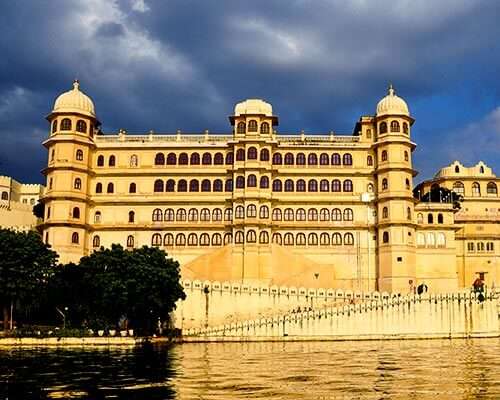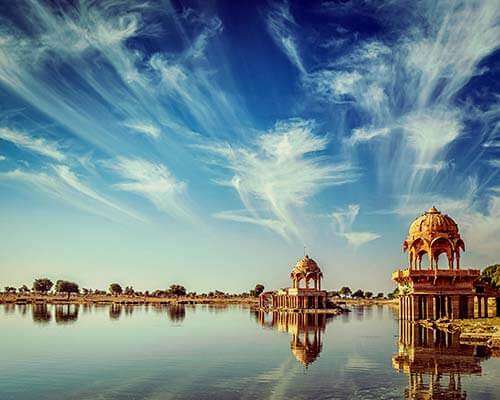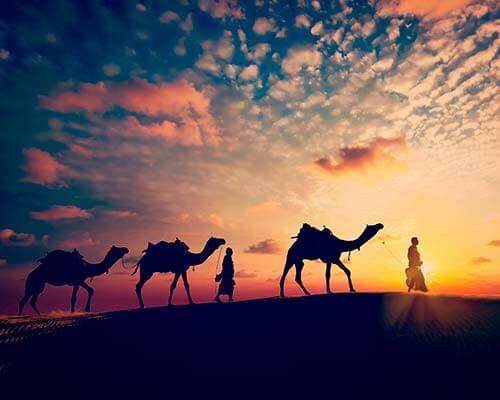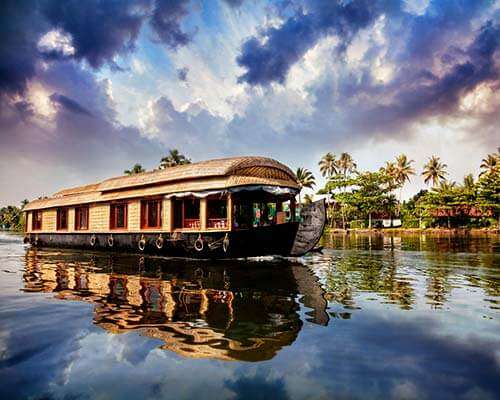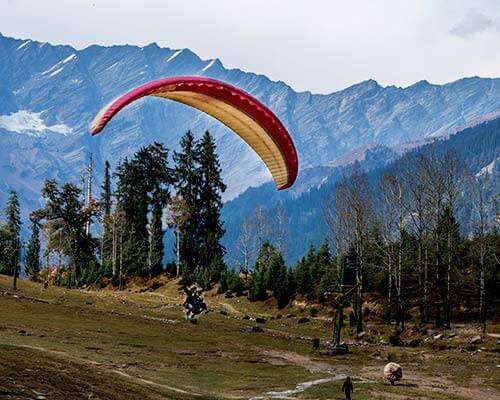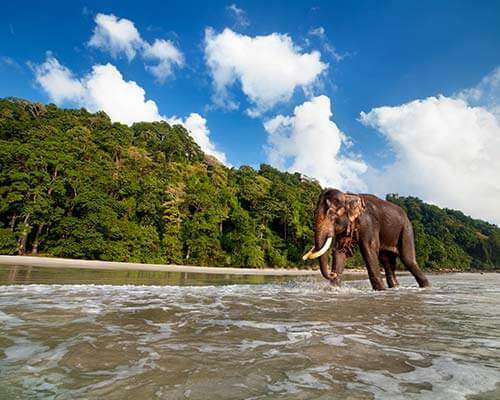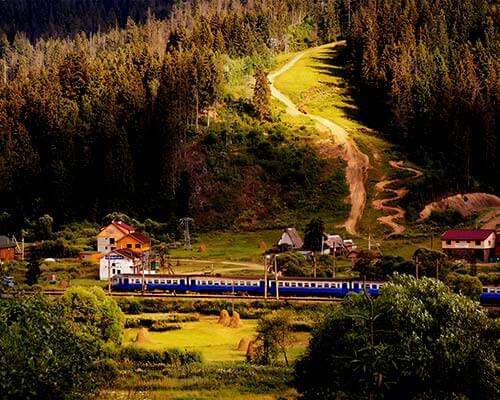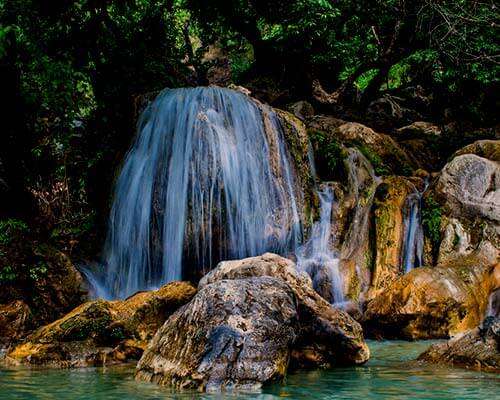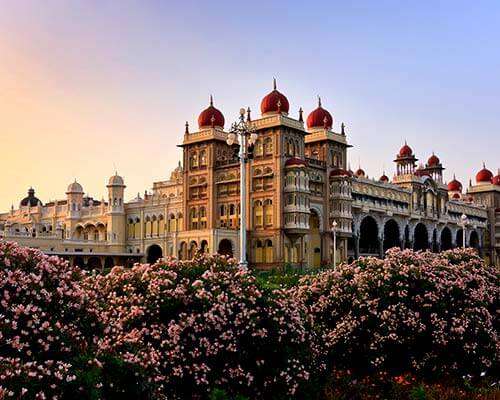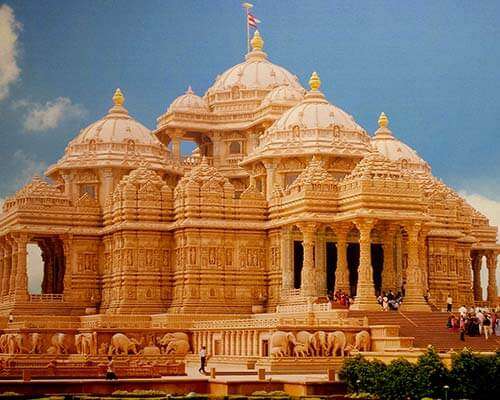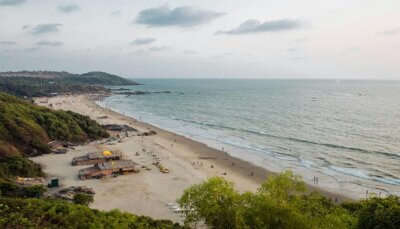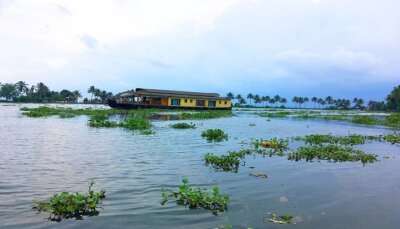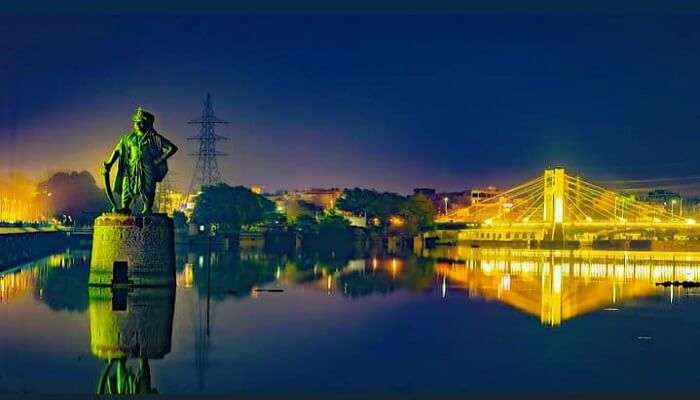Jantar Mantar Jaipur: The World’s Largest Sundial
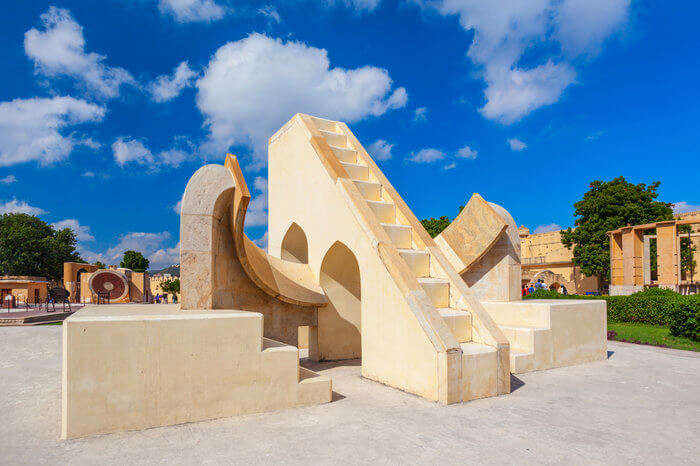
Built by the Rajput king Sawai Jai Singh II in 1734, Jantar Mantar, Jaipur is an astronomical observatory, which features the world’s largest stone sundial. India has five of them, and the largest one is in Jaipur. This Jantar Mantar observatory is also a UNESCO World Heritage site that every tourist must add to their itinerary. Here’s all that you’ll ever need to know about the observatory before visiting it.
Jantar Mantar, Jaipur History

Jantar Mantar in Jaipur is a fascinating astronomical observatory, located at the heart of the city. This is one of the largest observatories in the World, comprising of interesting stone structures that help to interpret the position of celestial bodies and calculate local time. Enumerated as a World Heritage Site by UNESCO, Jantar Mantar in Jaipur attracts architects, mathematicians, geographers and historians.
Jantar Mantar, Jaipur was constructed by Maharaja Sawai Jai Singh II, and he built 5 such observatories in different parts of the country: Jaipur, Mathura, Delhi, Ujjain, and Varanasi. The one in Jaipur is the largest of all, whereas the one in Mathura is almost in ruins, now. Maharaja Sawai Jai Singh II is the founder of Jaipur city and a potential ruler of Amber region. Along with his political expertise, he was also a scholar in physics, mathematics, and astronomy. During his reign, he was commissioned by Emperor Muhammad Shah to rectify astronomical calculations in Islamic zij tables. To accomplish this task, he gathered astronomical data from European and Persian nations and studied and interpreted the same.
After extensive research and studying the gathered data, Maharaja Sawai Jai Singh II constructed stone made instruments to determine the position of planetary bodies and measure time. Jaipur Jantar Mantar was built between 1728-1734 and its stone instruments are considered to be more accurate than others.
Must Read: 53 Magnificent Tourist Places In Jaipur
When To Visit Jantar Mantar, Jaipur
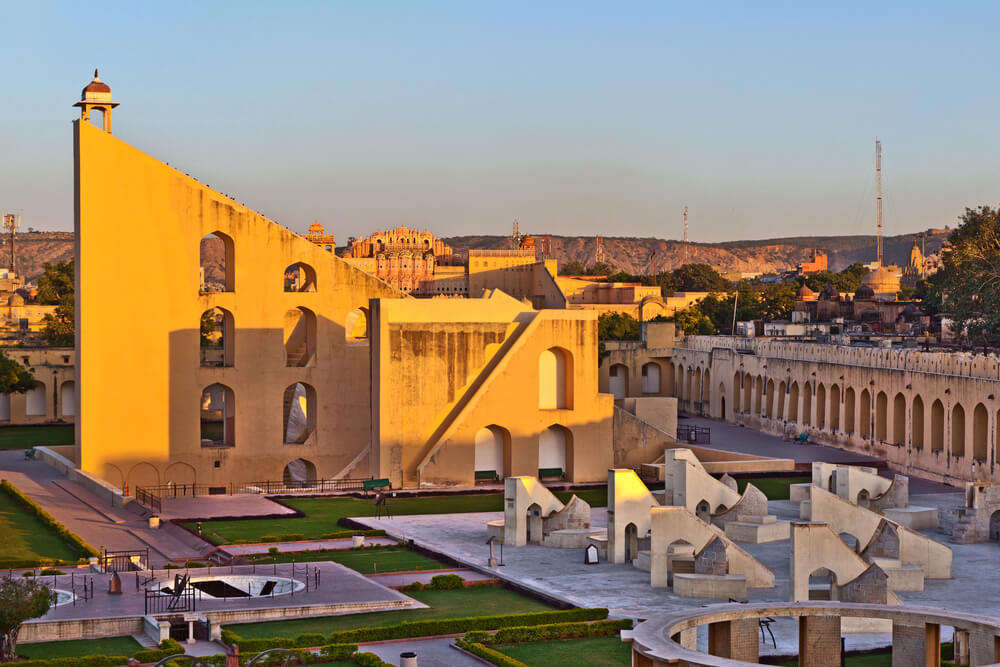
Best time to visit Jantar Mantar: The best time of the day to visit Jantar Mantar in Jaipur is noon. During mid-day, the Sun is vertically above and it is easy to understand the process of interpretation of the readings of each instrument.
Jantar Mantar Jaipur timings: Jantar Mantar in Jaipur remains open from 9:00 am to 4: 30 pm, on all seven days of the week. Generally, one can see the whole of Jantar Mantar in 30 to 45 minutes of time.
Jantar Mantar Jaipur entry fee: Jantar Mantar, Jaipur entry fee is INR 50/person for Indians and INR 200/per person for foreigners. The entry cost for Indian students is INR 15/person and that of International students is INR 25/person. Students get this discount on showing valid ID proof.
Jantar Mantar Jaipur light and sound show timings:
- Oct – Feb: 6:30 pm onwards
- Mar – Apr: 7:00 pm onwards
- May – Sep: 7:30 pm onwards
Suggested Read: 43 Most Famous Historical Places In India
Major Attractions Within Jantar Mantar
The Jantar Mantar observatory in Jaipur comprises of 19 instruments to measure the position and distances of extraterrestrial bodies. These instruments are basically stone structures, depicting interesting geometric shapes. It is advisable to take a local Jantar Mantar, Jaipur guide or an audio guide for a clear understanding of the instruments and how they work.
1. Vrihat Smarat Yantra: The Huge Sundial
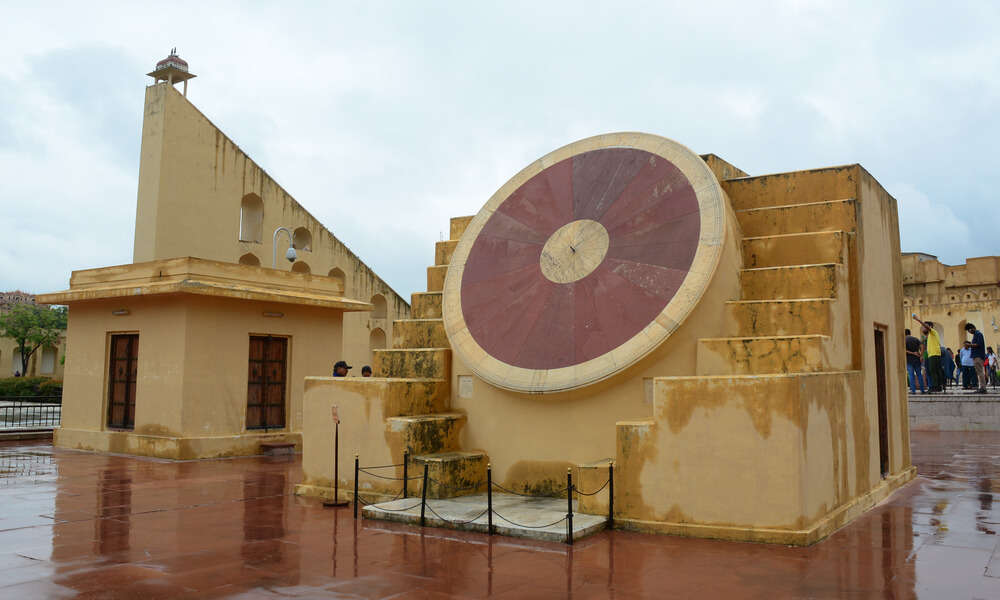
Vrihat Smarat Yantra is a gigantic sundial, placed at the centre of the Jantar Mantar observatory. This is 27 m long and renowned as the tallest sundial in the World. The Samrat Yantra, translating to ‘supreme instrument’ is an equinoctial sundial and measures time up to the precision of two seconds.
The shadow of the triangular wall of the yantra, which is positioned in the north-south direction with an angle identical to the latitude of this location, travels equal distances in equal intervals of time, on the eastern and western quadrants. This movement is standardized to calculate and interpret the local time.
Rajasthan Holiday Packages On TravelTriangle
2. Laghu Smarat Yantra

Popular as small Smarat Yantra, it is smaller in size and calculates time up to the accuracy of twenty seconds. The ramp of this sundial points towards the North Pole, hence Jaipur time can be easily calculated from the position of ramp’s shadow on the fine divisions of the carved scale. The shadow of the triangular wall of the yantra tells the local time.
Suggested Read: 20 Historical Places In Rajasthan That Will Take You Back To The Glorious Past
3. Ram Yantra
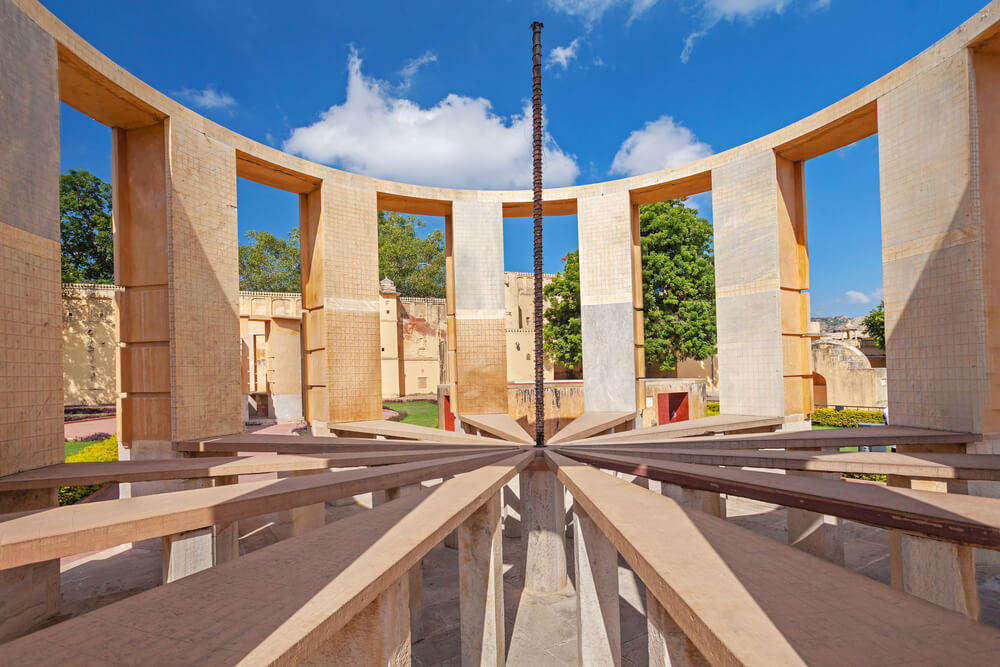
Ram Yantra measures elevation and azimuth of Sun and planets. The instrument comprises a pair of tube-shaped structures, open to the sky. Each structure has a pole of equal height at the center. Scales indicating angles of altitude and azimuth of extra-terrestrial bodies are inscribed inside the walls of these structures. Ram Yantra is only seen in Jantar Mantar of Jaipur and New Delhi.
4. Jaya Prakash Yantra
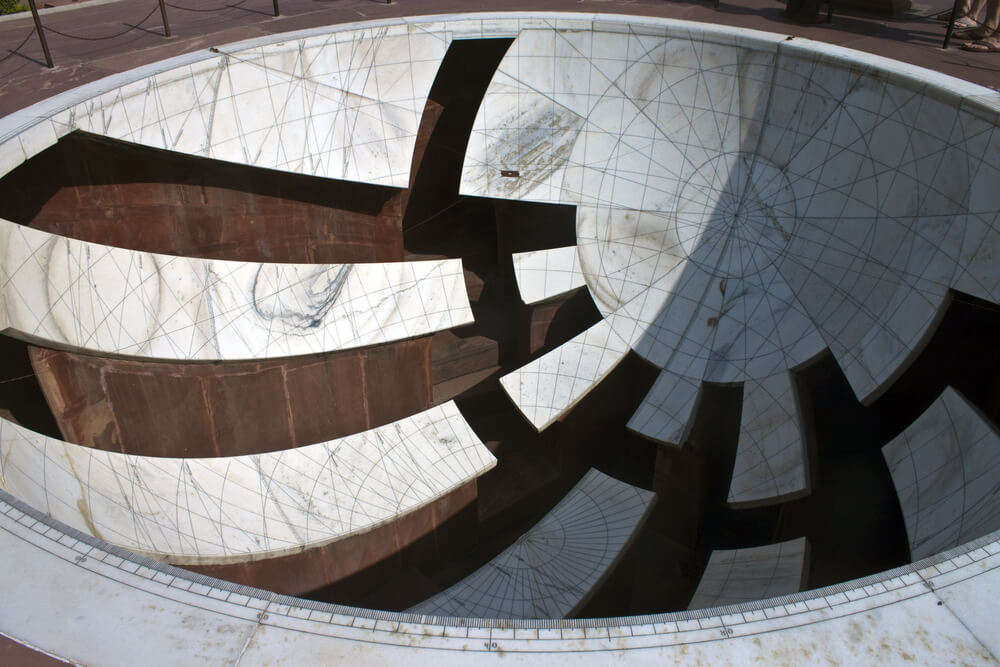
This is another major attraction in the Jantar Mantar of Jaipur. This yantra consists of two hemispherical bowls like sundials with graded marbel slabs. The inverted image of the sky falls on the slabs and the movement of the inverted shadows help to detect the elevation, azimuth, hour angles and exact position of heavenly bodies.
5. Chakra Yantra
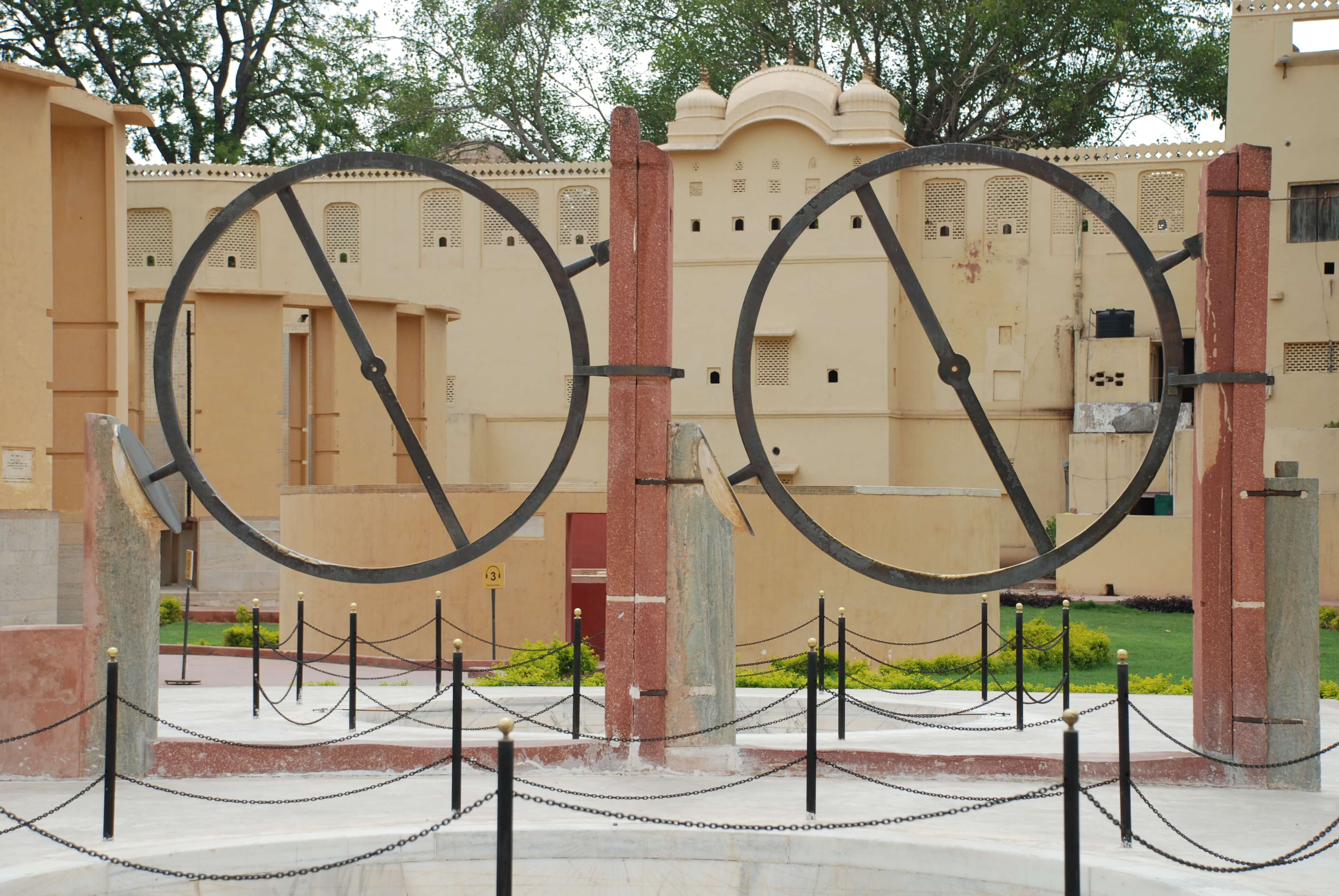
The chakra yantra, Jantar Mantar, Jaipur is a ring instrument which calculates the co-ordinates and the hour angle of Sun. It consists of four semi-circular arcs, on which the gnomon throws a shadow, hence deducing the declination of the Sun four times in a day.
6. Digamsa

Another must see instrument of Jantar Mantar is Digamsa. It is a pillar in the middle of two concentric outer circles, which helps to predict the sunrise and sunset timings in a day.
7. Nadivalaya

With a pair of circular plates, facing north and south, Nadivalaya represent the two hemispheres of Earth. The wall of the plates is inclined at such a gradient, that the instrument is always parallel to Earth’s equatorial plane.
Suggested Read: 38 Glorious Places To Visit In Jaisalmer
8. Karnti Vritya
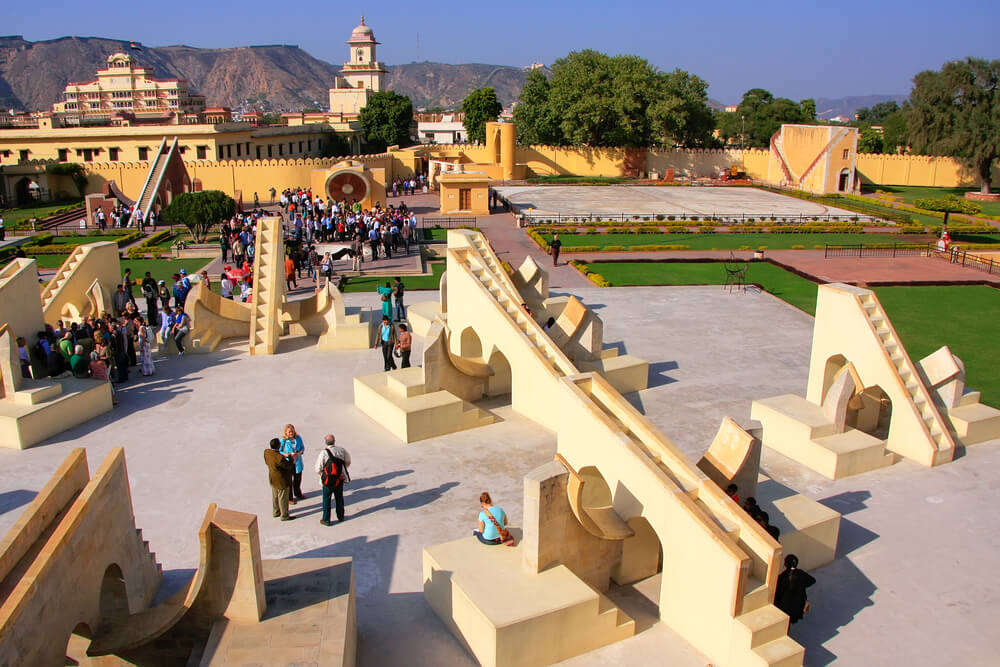
Jantar Mantar excursion in Jaipur is not complete if you skip Karnti Vritya. This is a special instrument, used to measure the solar sign of the Sun in the daytime.
Places To Visit Around Jantar Mantar, Jaipur
Here are a few other places which you can check out on your trip to Jaipur. Read on, to know more about these places.
1. City Palace
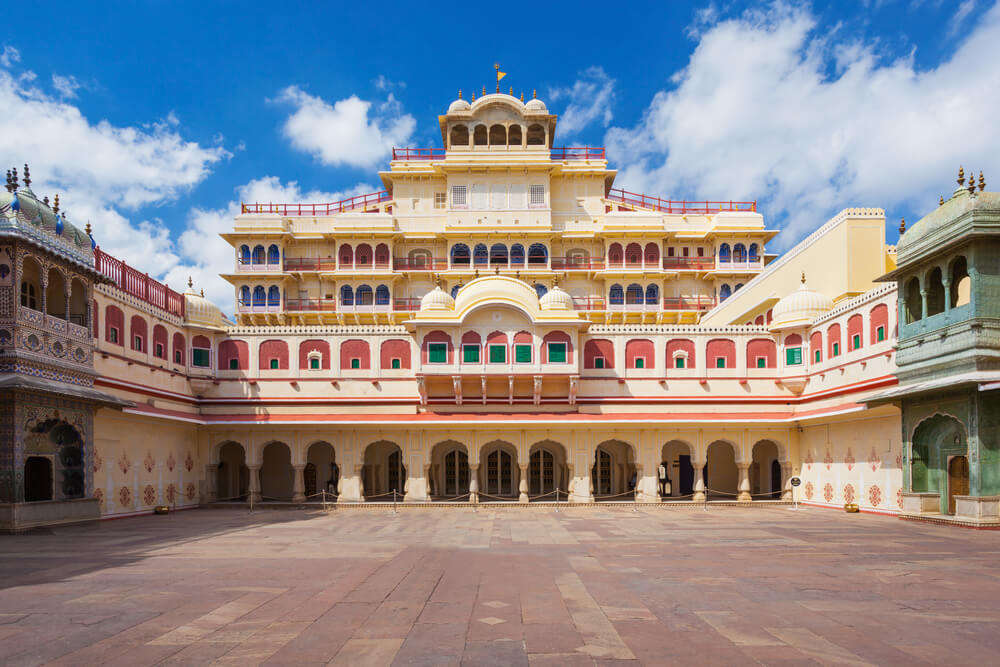
Endowed with beautiful Rajasthani and Mughal architectural designs, the City Palace in Jaipur is at a stone throw distance from Jantar Mantar. The courtyard, museum, art galleries and well-decorated garden attract visitors here. The palace complex is beautiful and one should definitely explore it on their trip to Jaipur.
2. Hawa Mahal

This is a beautiful palace in Jaipur made of red and pink sandstone. Hawa Mahal is located at a distance of 700 m from Jantar Mantar and can be reached in 3 mins in car. Hawa Mahal, also known as ‘Palace of Wind’ offers amazing view of the city from higher floors. The sight of Jantar Mantar from the top floor of this palace will surely leave you awestruck.
Suggested Read: Top 39 Things To Do In Jaipur: Exploring The Pink City All Over Again
3. Tripolia Gate
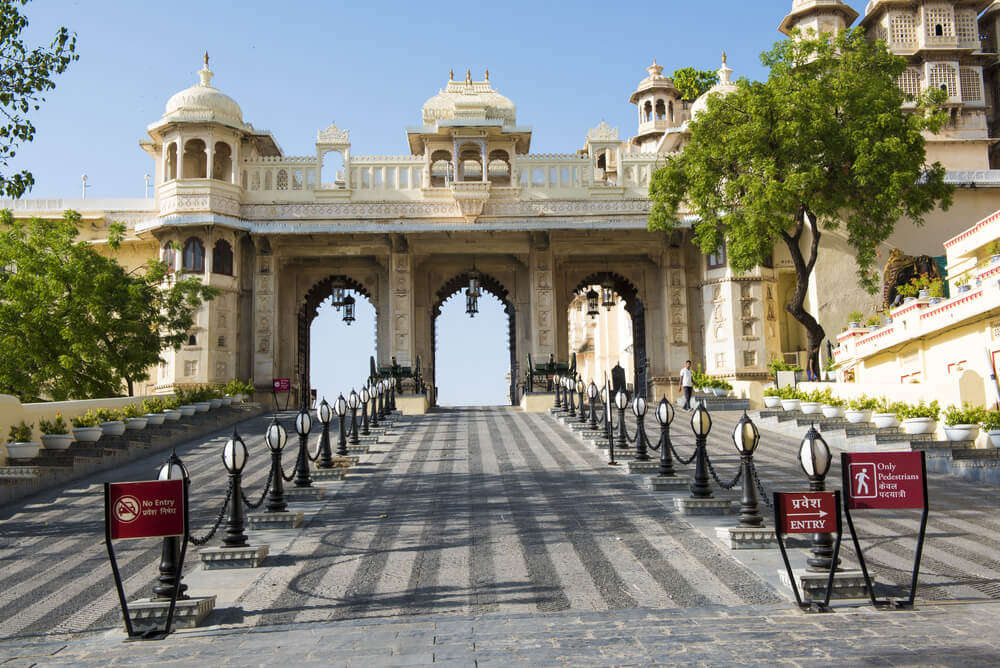
Built in 1734, Tripolia Gate marks the entry to the ‘pink city’. Designed in European, Mughal and Rajput themes, this grand entrance was also the entry gate to the city palace in earlier days. It is a historical landmark in Jaipur and the busy bazaar surrounds this Jaipur gate today.
4. Goverdhan Temple
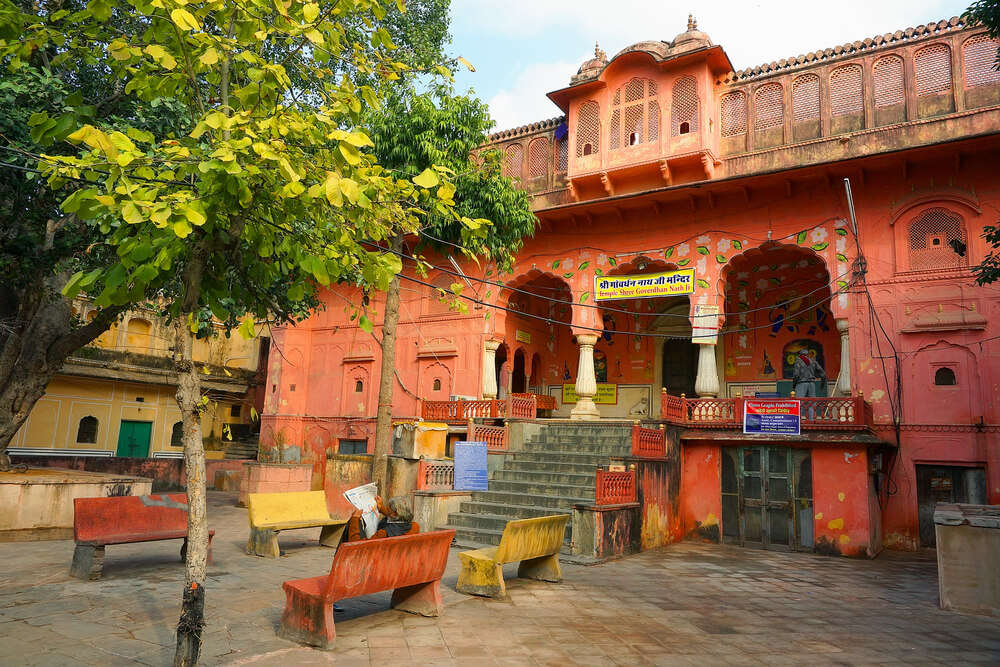
Located in the Hawa Mahal complex, this age-old temple dates back to 1790. Built by Maharaja Sawai Pratap Singh, this temple is dedicated to Lord Krishna and Radha. The structure of the temple resembles a haveli. It is one of the top tourist attractions in Jaipur.
Significance Of Jantar Mantar

Jantar Mantar is an observatory was made by Jai Singh II and was a culmination of observational astronomy from various cultures. The observatory studies:
- Maragheh
- Ulugh Beg’s Observatory at Samarkand
- European literature about instrumental astrology
- Ancient Sanskrit scriptures.
The observations that were made at this observatory contributed to Zij-i Muhammad Shahi. Jantar Mantar in Jaipur and the instruments at Jantar Mantar in Jaipur used to act as a mecca for astrologers and astronomers who used to come here and discuss their findings.
Further Read: 101 Places To Visit In India Before You Turn 30
If you have not visited Jantar Mantar, Jaipur yet, surely include this in your next Rajasthan trip and have an incredible vacation. The ‘Pink City’ is an amazing honeymoon and family destination! Travel soon and do not forget to share with us your experience!
For our editorial codes of conduct and copyright disclaimer, please click here.
Frequently Asked Questions About Jantar Mantar Jaipur
What is special about Jantar Mantar Jaipur?
Jantar Mantar Jaipur is the biggest in India out of all 5 Jantar Mantars present in the country. It is a huge observatory constructed to predict time and movement of the planets and other bodies. It is also the world’s largest sundial.
Why was Jantar Mantar built in Jaipur?
Jantar Mantar Jaipur is a stone sundial that was built to collect astronomical data. The structure uses the position of the sun and the direction of the shadows to tell time in the ancient days. It has been designed skilfully to also predicts the movement and position of other celestial bodies in space.
How many Jantar Mantars are there?
There are a total of 5 Jantar Mantars located in different Indian cities, namely Jaipur, Delhi, Varanasi, Ujjain, and Mathura.The one in Jaipur is the largest sundial in the world. Jantar Mantar in Delhi is also popular.
How many instruments are there in Jantar Mantar Jaipur?
There are total 19 instruments in Jantar Mantar Jaipur. Some of the major instruments of Jantar Mantar are Samrat Yantra, Disha Yantra, Chakra Yantra, Jai Prakash Yantra, Rama Yantra, Rashiwalay Yantra, Utaansh Yantra, and Dingash Yantra.
Who built Jantar Mantar?
The Jantar Mantar Jaipur was built by Sawai Jai Singh II and completed in completed in 1734. The Jantar Mantars at Delhi, Varanasi and Ujjain were built by the Hindu Rajput ruler, Maharaja Jai Singh II.
Why is Jaipur called the ‘Pink City’?
Jaipur is called the ‘Pink City’ because Maharaja Ram Singh of Jaipur got the entire city painted in pink color to welcome the Prince of Wales and Queen Victoria. The two had visited India on a tour in 1876 and pink is considered to be the colour of hospitality. It was Lord Albert who referred to Jaipur as a ‘Pink City’.
In which all cities are Jantar Mantar present?
Delhi, Jaipur, Ujjain, Varanai and Mathura have Jantar Mantar.
A book lover and fun-loving, overtly emotional mom with a wanderlust soul, Sukanya has completed her Master Degree in Geography and currently perusing her passion for writing as a profession. Nothing detoxes her more than trying new recipes and travelling to offbeat places is ultimate Therapy for her.

